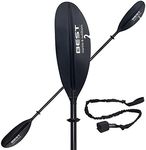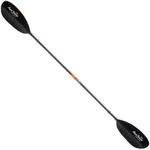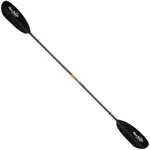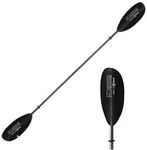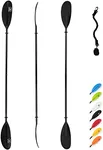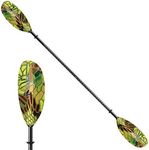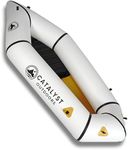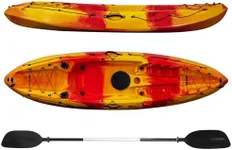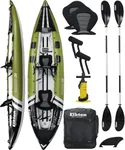Buying Guide for the Best Kayak Fishing Paddles
Choosing the right kayak fishing paddle is crucial for an enjoyable and efficient fishing experience. The right paddle can make a significant difference in your comfort, stamina, and overall success on the water. When selecting a paddle, consider factors such as your paddling style, the type of water you'll be fishing in, and your physical attributes. Here are some key specifications to help you make an informed decision.LengthThe length of the paddle is important because it affects your paddling efficiency and comfort. A paddle that is too short will require more effort to move the kayak, while a paddle that is too long can be cumbersome and difficult to maneuver. Paddle lengths typically range from 210 cm to 260 cm. If you have a wider kayak or are taller, you may need a longer paddle. Conversely, if you have a narrower kayak or are shorter, a shorter paddle may be more suitable. Consider your kayak's width and your height when choosing the right length.
Blade ShapeBlade shape affects how the paddle interacts with the water and can influence your paddling style. There are two main types of blade shapes: high-angle and low-angle. High-angle blades are shorter and wider, designed for more aggressive, powerful strokes, making them ideal for faster paddling and rougher waters. Low-angle blades are longer and narrower, suitable for more relaxed, efficient strokes, making them better for long-distance paddling and calmer waters. Choose a blade shape that matches your paddling style and the type of water you'll be fishing in.
MaterialThe material of the paddle affects its weight, durability, and price. Common materials include aluminum, fiberglass, and carbon fiber. Aluminum paddles are the most affordable but are heavier and less durable. Fiberglass paddles offer a good balance of weight, durability, and cost. Carbon fiber paddles are the lightest and most durable but are also the most expensive. If you plan to paddle for long periods, a lighter paddle can reduce fatigue. Consider how often you'll use the paddle and your comfort level when choosing the material.
Shaft DesignThe design of the paddle shaft can impact your grip and comfort. There are two main types of shaft designs: straight and bent. Straight shafts are the most common and are generally easier to use for beginners. Bent shafts have a slight angle that can reduce strain on your wrists and provide a more ergonomic grip, which can be beneficial for longer paddling sessions. If you experience wrist discomfort or plan to paddle for extended periods, a bent shaft may be a better choice.
FeatheringFeathering refers to the angle between the blades of the paddle. Feathered paddles have blades that are offset at an angle, which can reduce wind resistance and make paddling more efficient. Non-feathered paddles have blades that are aligned with each other. Adjustable paddles allow you to change the feathering angle to suit your preference. If you often paddle in windy conditions, a feathered paddle can be advantageous. Consider whether you prefer the feel of a feathered or non-feathered paddle and if adjustability is important to you.


